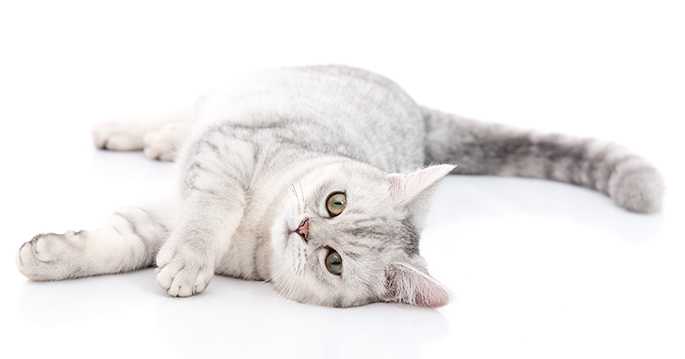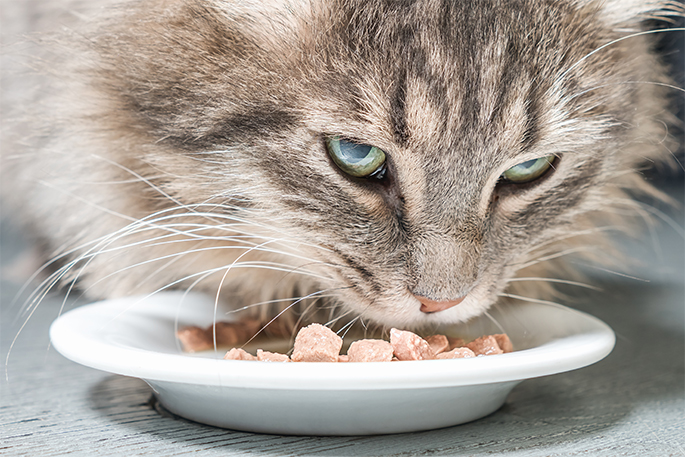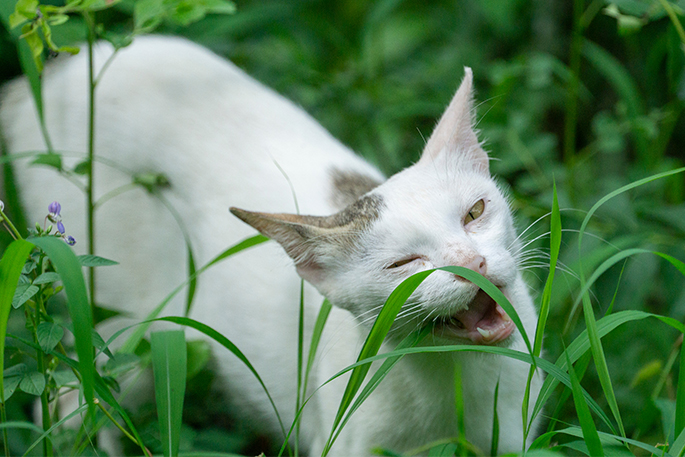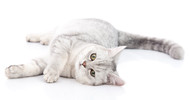Regurgitation in Cats
29th Aug 2023

Ever had your cat expel its food after eating? This is not uncommon. In this article, we will explain the difference between regurgitation and vomiting, and speak a bit on the topic of hairballs. How to prevent either from happening again and how a healthy diet will help.
Regurgitation
Firstly, we will talk about Regurgitation. This is a passive action where undigested food is expelled from the oesophagus. This can occur minutes after ingesting something but typically occurs within 30 minutes to 2 hours after consumption. What would this look like to you? Normally the food that comes out will look the same as when it was eaten. It may be accompanied by liquid. This act is virtually effortless for the cat and does not involve heaving or forceful abdominal contractions.
How often is it acceptable for a cat to regurgitate? If they do this occasionally, once or twice a month, there is no cause for concern. On the other hand, if this happens more often, contact your vet as there may be an underlying issue causing your cat to get sick.
There are several conditions that may lead to a cat regurgitating its food. It could merely be caused by a cat eating too quickly, or taking in too much air as it eats. Alternatively, your cat could be overeating. In which case, try feeding your cat the food in smaller amounts/pieces. Also, cats tend to get territorial and/or stressed if they are feeding next to others. If this is the case, try separating the cats during feeding time, so they do not feel in any hurry to eat their food.

The temperature could also be a factor. If the food is too cold, try putting the food in a plastic bag in warm water before serving, but DO NOT microwave it. Finally, too much water after eating can also upset your cat and lead to regurgitation.
All these factors can be monitored and if you think any of them are the cause, you can take the necessary action, to avoid the regurgitation happening so much, or at all.
If however, you feel there is something more serious, seek the advice of your vet for them to try and establish the cause and check if there an underlying health issue.
Regurgitation will not normally be related, in any way, to your cat’s food being ‘off’. Normally, with regurgitation, food has not had time to be absorbed, or digested, in the gut.
Vomiting
Next, let us discuss Vomiting. There are two types of vomiting to look out for.
Acute: This is an episode of 1-2 days maximum, with no other symptoms. This could be due to something the cat has eaten, that it should not have eaten, or could be that the food it has eaten, is in some way contaminated. Normally, a cat can overcome this issue by itself and will not necessarily require medical intervention. Don’t forget that a cat’s gut is very acidic, to cope with eating raw prey in the wild.
Chronic: This is ongoing, once or twice daily and the cat displays other symptoms. For example, the cat could be experiencing abdominal pain, weight loss, or depression. How does vomit look to us? This act involves retching and thrusting of the head. Vomit will be acidic and have a sour smell. It can also have a thick, yellow, foamy, bile from the stomach accompanying it. Please contact your vet if your cat is vomiting in this way as it could be a sign of much worse than an upset stomach.

Finally, hairballs. Occasional hairballs are considered normal. They can occur merely due to normal grooming patterns, or possible over-grooming, eating parts of houseplants, or pieces of toys. Signs of concern are if they seem to be in pain when releasing the hairballs, or if they stop eating, or passing stools.
Hairballs should not be frequent or painful, or difficult for the cat to pass.
If left untreated, it can go the other way and cause painful intestinal blockages. Keep track of the cat’s routine and lookout for signs of constipation, lethargy, or anorexia. If it has not passed a hairball in a while, some action may be required, as it is common for your cat to occasionally release one. See your vet if the hairballs persist on a consistent basis and if they are big and painful.
If you think your cat has a hairball, it can be helpful to give it some fresh grass to eat or give it a small amount of cooked pumpkin, or butternut squash. The fibre can assist in loosening the hairball.
We never want to see our pets in pain or sick. They are part of the family. A full and completely balanced diet is vital to maintain your cat’s health and happiness. Nutrition is the backbone to avoiding any painful acts in your cat’s life. Without it, your four-legged companion can suffer from multiple health issues. These include, but are not limited to, allergies, bad breath, diarrhoea, vomiting, itching, urinary tract infections, bladder problems, weight gain or loss, lethargy, and plenty more. This is excluding any of the more fatal diseases.
Studies have shown that cats who reach the age of 10 can develop sicknesses such as cancer, due to the preservatives, fillings, and other unnatural additives that are hidden in some foods. It is imperative to provide your felines with the appropriate nourishment required to prevent any sort of health issues from sneaking into your cat’s life. Simply because a product has an attractive packaging or an enticing advert, this does not mean it will provide a complete balanced meal, or the correct nutrients, required to maintain your furry friend’s optimal health throughout the duration of its life.
A species-appropriate, natural, raw diet, will always be the best way to keep your cat healthy, and its teeth, eyes, and fur, in good condition, and avoid any of the associated health issues that can come from a less adequate food source.
Click here to start trying Purrform raw cat food!
